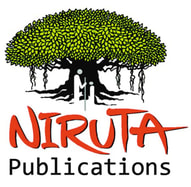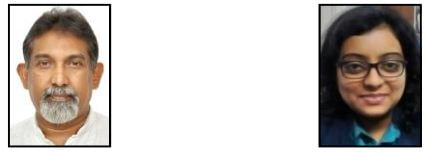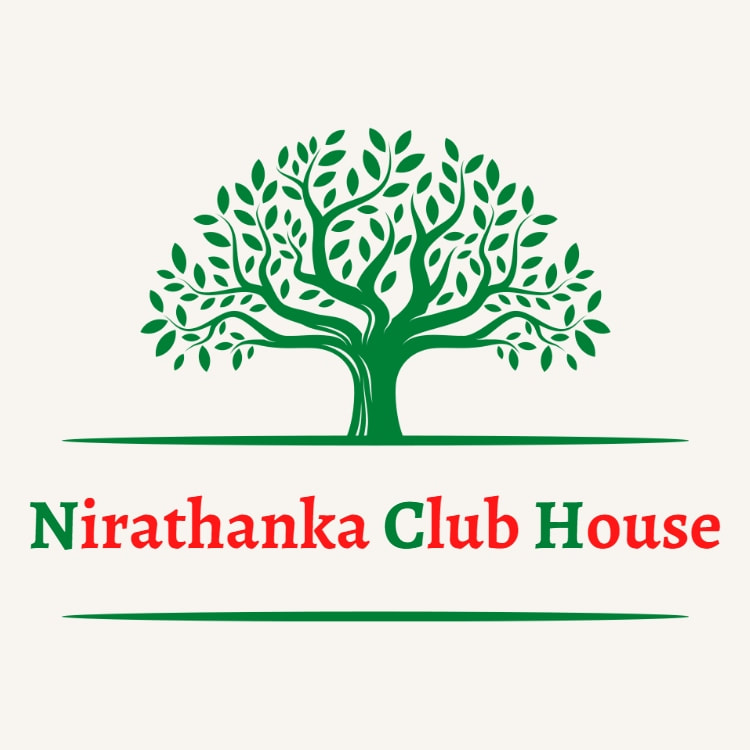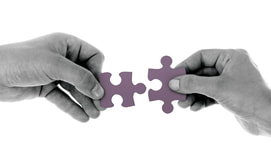|
Abstract This is an article on Dr. Ruth Manorama and her outstanding contribution for the liberation of the Dalits, particularly Dalit Women for forty years. Caste has been the centre of debates and discussions for centuries now. Caste based discrimination continues to be one of the most wide ranging human rights violations that has been prevailing for decades and has affected almost the quarter of the total population residing in India. Caste is still used as a mechanism to socially organise the people in India which has become a source of marginalisation, discrimination, and deprivation to a large section of people in our society. Indian society is divided into four castes or Varnas namely Brahmins, Kshatriyas, Vaishyas and Shudras. Some of whom who fall outside the caste system are known as ‘untouchables’. Discrimination based on this hierarchical setup puts a few in a privileged position and others in a disadvantaged and humiliating position.
As per the census 2011, SCs and STs constitute 16.2(166,635,700) and 8.2 percent (84,326,240) respectively. But still caste-based discrimination in terms of health, education, access to public areas, and employment remains endemic and is accompanied by strong arrangement of impunity. Women constitute almost half of the total SC and ST populations, but they experience manifold forms of discrimination arising from their low social position in the caste system. The nexus of caste, class and gender places Dalit women in a doubly disadvantageous position and makes them extremely vulnerable. They are the most marginalised community and face multiple forms of exploitation and discrimination. This has also negative implications for the Dalit women to have access to health, wage employment, assets, education, social mobility and political participation. “Dalit women continue to be illiterate, malnourished, in poor health, overworked, oppressed and victimised by a number of factors, including their own families and community. They make up the substance of the body of research, knowledge and information in the country displaying the poorest social indicators, dismal social and economic achievement. They lack access to resources including the natural resources they work with every day, although their labour enriches their master” (Manorama, 2005). Ruth Manorama, one of the leading advocates of Dalit women in India, points out that the Dalit women in India needs special attention as they are one of the largely segregated groups in the world. Dalit women are discriminated not just by the people of the higher castes but also from the men of their own community because of their gender identity. Manorama (2005) rightly points out “the Dalit women have to grapple with the discrimination due to caste hierarchy and untouchability on the one hand and extreme economic deprivation and poverty on the other coupled with political, legal and religio-cultural discrimination.” She has been constantly involved in working for the rights of the Dalit women and in the early 1990s began to bring the plight of Dalit women to the international forums. In 1986 Ruth participated in a cross cultural study to look into the lives of the Afro-American Blacks in the US and Dalits in India. She was specifically interested in studying and comparing the lives of the Black women with that of the Dalit women because of the likenesses in the situations of the marginalised communities across the world.In order to put the issue in the international front she was closely associated with the mobilisation of Dalits towards the World Conference against Racism in Durban. WCAR served as a huge platform to recognise caste as a form of race related discrimination and it reframed the international debate on caste. In the early 1990s Dalits have been advocating at the UN level specifically before the Committee on Elimination on Racial Discrimination (CERD) for the recognition of the caste based discrimination. At this stage Ruth was closely associated with the Dalit women mobilisations particularly in Bangalore, Delhi and Pune. National Federation of Dalit Women (NFDW) In 1993 in Bangalore a public hearing was organised on “Violence against Dalit Women” in order to mobilise Dalit women. It was this mobilisation that led to the formation of the National Federation of Dalit Women in which Ruth Manorama served as the President. Hence, Dalit women’s movement took an independent organisational set-up in the form of the National Federation of Dalit women in August 1995. Through the organisation she has constantly stressed on the violence and discrimination faced by the Dalit women. The NFDW pointed towards the necessity of looking at the nexus of caste, class and gender to appreciate Dalit women’s position adequately. Pointing towards the discrimination faced by the Dalit women in the caste structure, Ruth argues that the caste based discrimination leads to violent appropriation and sexual control of the Dalit women by the upper caste dominant men which is clearly evident through the systematic rape of the Dalit women and forced prostitution in the name of the Devadasi system. “The formation of the NFDW was the first expression of an independent and autonomous assertion of Dalit women’s identity” (Smith, 2008). It was at this time that Manorama reiterated the feeling of the invisibility of the Dalit women within the feminist movement and the Dalit movement. While on the one hand feminist movement emphasised on the issues related to gender inequality, patriarchy and economic empowerment, on the other hand, Dalit movement looked into the issue of caste. Both the movements were criticized for the invisibility towards the Dalit women’s issue. As articulated by Ruth Manorama “Conscious that the call for a separate platform could be interpreted as divisive move by both Dalit men and non-Dalit women, the proponents of such a special forum emphasize that their initiative must not be mistaken for a separatist movement. Rather, they assert that there is need for strong alliances between the Dalit movement, the women’s movement and the Dalit’s women’s movement if their common vision of social, economic and political equality and justice for all is to be realized.” (Manorama, 2006a). This invisibility of the Dalit women and dominance of the upper caste women within the women’s movement became a motivating factor for Ruth Manorama and other Dalit women in forming the NFDW. In 1994 Ruth set up a ‘coordination unit’ in Bangalore for the mobilisation of the NGOs prior to the Beijing conference. Through this unit Ruth organised Dalit women and gave information about the Beijing Conference. In 1995 for the Fourth UN World Conference on Women in Beijing she helped coordinate the South Indian chapter of the preparations. Beijing served as a platform for the Dalit women to express themselves directly on an international stage. Here Ruth placed the issue of caste within the discourse of race and human rights violation. At the conference, NFDW and Ruth Manorama mainly worked with the other Indian NGOs. This, however, became a platform for the Dalit women’s movement to build solidarity with the Indian women’s movement. Post-Beijing in December, 1995 she became the president of the National Alliance of Women. Post-Beijing in Hyderabad in December 1995 members of the Advisory Group present at Beijing met and decided that ten regional members of the group would come together as the National Alliance of Women Organizations (NAWO) with Ruth Manorama as the first president. NAWO has been described as “the first legitimate, autonomous, national-level platform for the concerns of grassroots and marginalized women in India. Since 1995 NAWO has been active internationally, most recently at meetings of the UN Committee for the Elimination of Discrimination against Women (CEDAW) advocating for the IWM in general and Dalit Women in particular” (Smith, 2008). Through this movement she took the mobilisation of the Dalit women forward. Ruth Manorama also served as the co-founding member of the National Campaign on Dalit Human Rights (NCDHR). Formed in 1998, NCDHR aimed at increasing the visibility of the violation of the Dalit rights at both the national and international levels and challenging the government’s impunity on Dalit issues. NCDHR, along with NFDW, has played a very critical role in the mobilization of the Dalits and transnationalizing the Dalit struggle.As parts of its struggle for attaining Dalit rights, NCDHR has produced ‘Black Papers’ which analysed the status of Dalit rights from the perspective of economic, social and cultural rights. In its attempt to transnationalize Dalit struggle, NCDHR along with NFDW, mobilised a large number of Dalits for the World Conference Against Racism in Durban (WCAR) in 2001. It was the largest international platform for the Dalits which recognised caste as a form of racial discrimination and henceforth reframed the international debate on caste. Apart from this, NCDHR has also made its submissions to the High Commission for Human Rights and Sub-Commission for the promotion and protection of human rights on the caste issue. Hague Conference on Dalit Women’s Rights held in November 2006 was another international conference which addressed the issue of Dalit women throughout South Asia. Organised by the Dalit Network Netherlands (DNN) in collaboration with IDSN, NFDW, NCDHR, the All India Dalit Women’s Rights Forum, and the Feminist Dalit Organization, Nepal, the conference focussed on the discrimination faced by 100 million Dalit women across South Asia in India, Nepal, Pakistan, Bangladesh and Sri Lanka. The Hague declaration known as the ‘Hague Declaration on the Human Rights and Dignity of Dalit women’ emphasized on the assertion and the resistance of the Dalit women and the multiple struggles that mark the Dalit women’s movement. It argued on the obligation of the domestic governments to address the issue of caste-based oppression and on the need of the policy measures for the recognition of the Dalit women’s human rights. Opposing the long term violence faced by the Dalit women, Ruth Manorama commented: “We are looking for reparation for the past violations of our human rights. And we are demanding an apology. It is true with Pakistanis. It is true with Nepalese. We need an apology from all our South Asian governments for the crimes against humanity. In India, we are working against our powerful government. We are not working against governments that do not know anything. We have constitutions. We, Dalit women, must pledge to liberate all of our people. Our rights are rising like the sun. Who can deny us the sunrise?”(Manorama, 2006b). Apart from this Ruth Manorama has also served in various national and international bodies. At the international level she has been a core group member of the Asian Women’s Human Rights Council and has also served in the national bodies like the State Commission for Women, the National Task Force on Women’s Empowerment, and the National Centre for Labour. Manorama, through her work, has mobilised thousands in support of the rights of the Dalit women and has travelled throughout India advocating for the Dalit women and building coalitions between various social movements. Through her transnational activism she was able to visibilize Dalit women at various international platforms which further led to the formation of the NFDW and NAWO. Apart from this, in 2005 there has also been a debate in the British Parliament, testimony presented before the US Congress, and appearances before the European Parliament including the testimony of Ruth Manorama before the European Parliamentary Committee in 2006 (Smith, 2008). In 2006, Manorama received the Right Livelihood Award bestowed by the Swedish Parliament for her commitment to achieve equality for Dalit women. Right Livelihood Award is one of the prestigious awards also known as ‘Alternative Nobel Prize’. Ruth Manorama is the 11th Indian to receive this award since its initiation in 1980. This is basically given to honour and support those “offering practical and exemplary answers to the most urgent challenges facing us today”. Ruth Manorama received this award for her work over years to achieve equality for Dalit women and working on it both at national and international levels. Through her transnational activism, Ruth Manorama has been able to visibilize and mainstream Dalit women both nationally and internationally and also compelled the government to some extent to address and recognise Dalit women’s issues. But at the same time it can also be argued that in an attempt to place local struggle of the Dalit women with that of the global concerns, we may run into the risk of forgetting the local realities of Dalit women which may ultimately again put the Dalit women in a disadvantaged position. As argued by Mahanta (2012) often the Western human rights norms become the framework within which transnational networks work. “The success of transnational activism requires vibrant and strong domestic movements that mobilise and exert pressure from within the boundaries of the state” (Mahanta, 2012). At the same time it also becomes important to recognise and understand that the Dalit women cannot be taken as a homogeneous category and their position varies depending on other social standing in the society like class, religion, region, and language. It is necessary to look into the impacts of transnational activities on the lives of the Dalit women especially in terms of improvement in their material life. Henceforth it becomes important to further mobilise young Dalit women at the grassroots level and understand the necessity of the emergence of leadership roles particularly among the young Dalit women leaders for the success of the social movements. References
N. Paul Divakar General Secretary, NCDHR Juno Varghese Researcher, NCDHR |
Categories
All
Social Work Learning Academy50,000 HR PROFESSIONALS ARE CONNECTED THROUGH OUR NIRATHANKA HR GROUPS.
YOU CAN ALSO JOIN AND PARTICIPATE IN OUR GROUP DISCUSSIONS. MHR LEARNING ACADEMYGet it on Google Play store
|
SITE MAP
SiteTRAININGJOB |
HR SERVICESOTHER SERVICESnIRATHANKA CITIZENS CONNECT |
NIRATHANKAPOSHOUR OTHER WEBSITESSubscribe |
MHR LEARNING ACADEMY
50,000 HR AND SOCIAL WORK PROFESSIONALS ARE CONNECTED THROUGH OUR NIRATHANKA HR GROUPS.
YOU CAN ALSO JOIN AND PARTICIPATE IN OUR GROUP DISCUSSIONS.
YOU CAN ALSO JOIN AND PARTICIPATE IN OUR GROUP DISCUSSIONS.
|
|







 RSS Feed
RSS Feed





